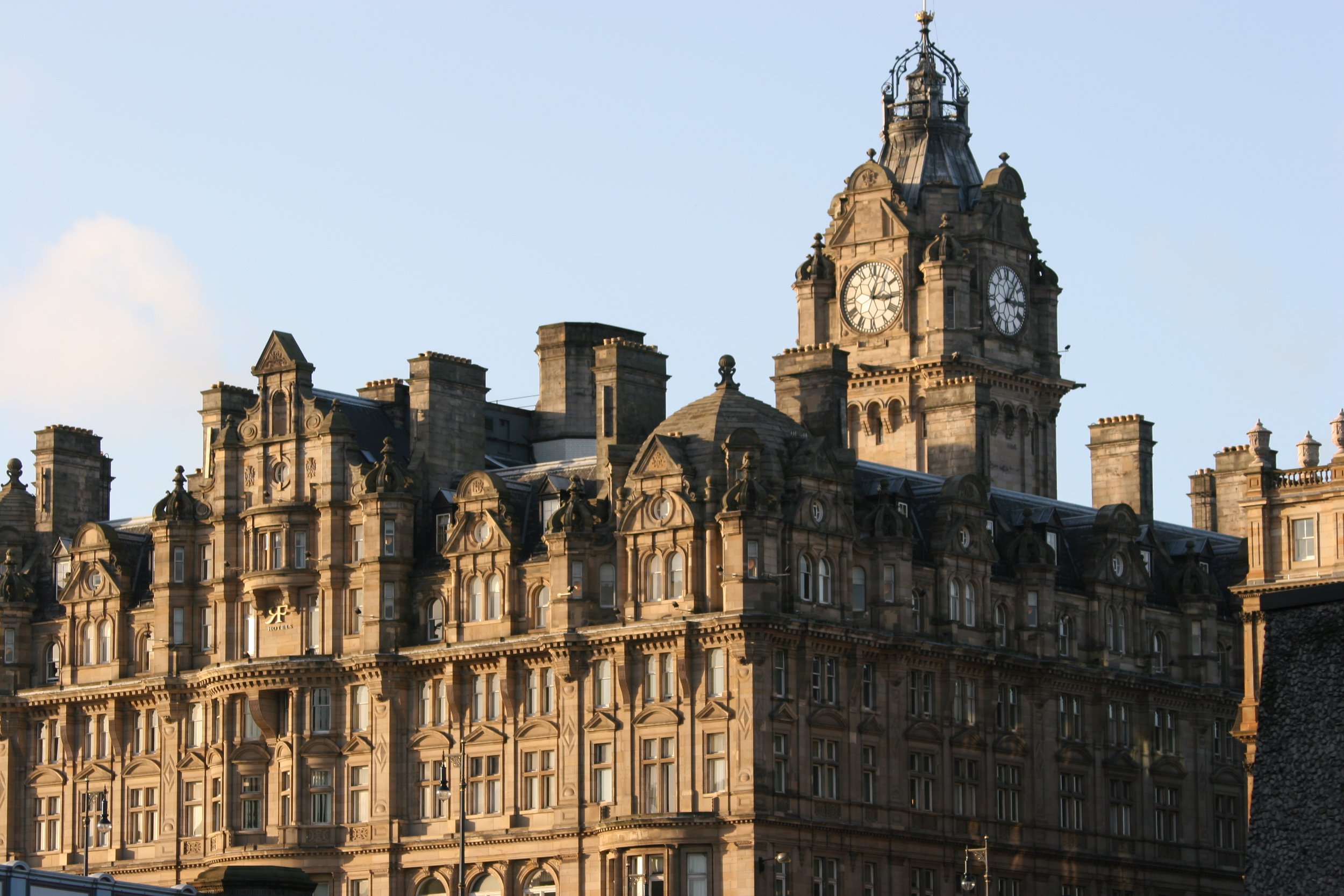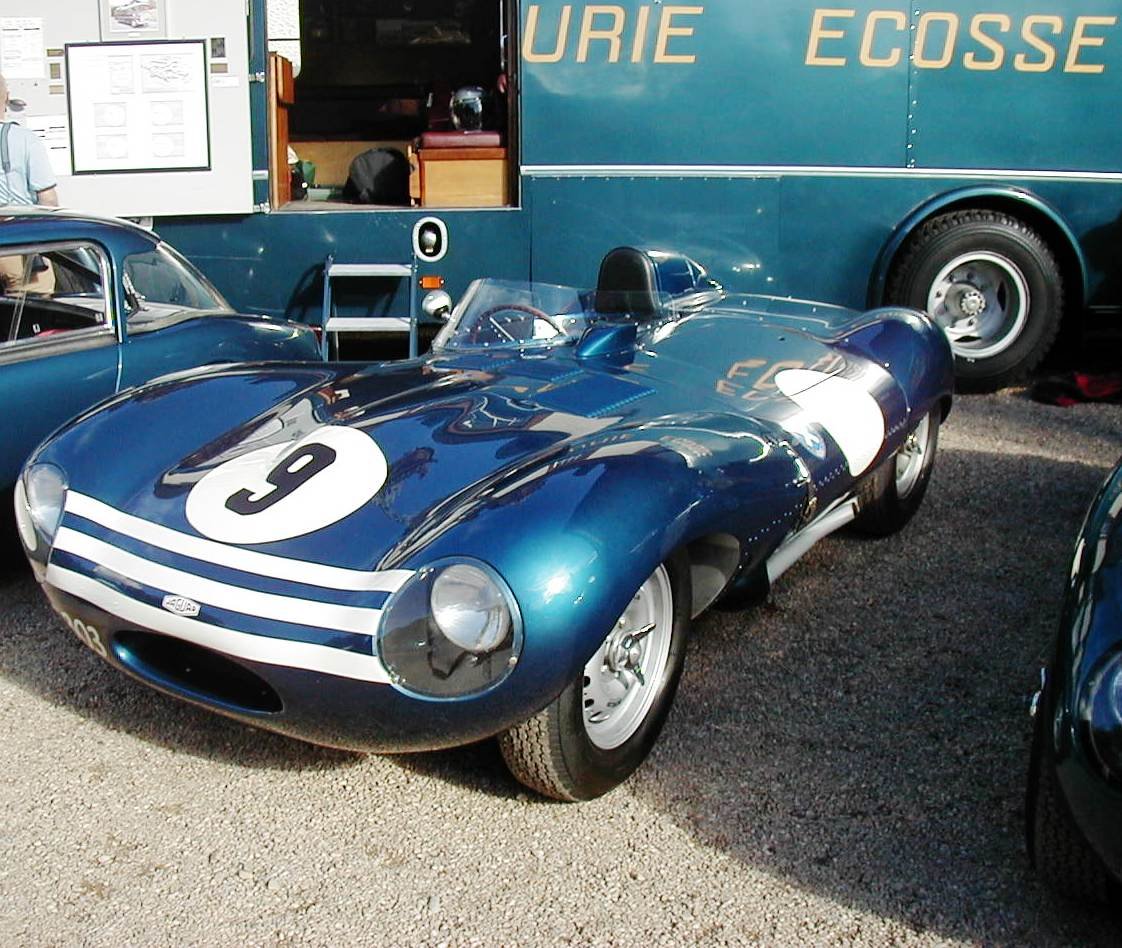Landmark on Princes Street, The NB Balmoral.
David Murray’s credentials seemed beyond reproach. In 1952 he founded Ecurie Ecosse with XK120s, raced C-types and won Le Mans twice with D-types before it all came to pieces. After six years with Jaguars, Murray was making changes. Ecurie Ecosse Association annual dinners were grand affairs in the North British Hotel. A beacon on Edinburgh’s Princes Street, its landmark clock on the William Hamilton Beattie Scottish Baronial tower was set three minutes fast to help Edinburghers catch trains.
The 1844 North British Railway Company was ambitious. Like its rival The Caledonian Railway, it wanted to operate south of Berwick-on-Tweed. By railways’ 1923 amalgamation it was fifth largest in the UK so was absorbed into the London and North Eastern Railway (LNER) yet its hotel above Waverley Station remained, to Edinburgh’s nobility and gentry, steadfastly The NB. “North British”, however, rankled as a term, so earnest Scot Nats could scarcely contain their delight in 1991, when it was reopened by (soon-to-be Sir) Thomas Sean Connery, and renamed The Balmoral.
It was still the NB when its clock timed David Murray’s speeches in the Banqueting Suite, announcing he was contemplating different sorts of racing. His supporter’s club never wholly believed his booming pleas of poverty. Ecurie Ecosse had always looked professional, the prosperous Association paying for its splendid new Commer transporter. Murray had been a free-spending wine business owner and accountant, racing Maserati and ERA. He and Jenny lived extravagantly at 1 Cambridge Street by Edinburgh Castle.
David Murray (centre) and Wilkie Wilkinson (right) in Merchiston Mews
A mile or two away, among elegant Georgian and Edwardian villas in a cobbled picturesque mews, Murray’s Merchiston Motors sold cars, but its principal activity was fixing racing cars. Wealthy customers included three with XK120s. Murray was their organiser and when Walter Ernest “Wilkie” Wilkinson joined in 1950, it had custody of Murray’s Maserati, Bill Dobson’s Ferrari 166, a Cooper-Bristol and a Connaught. They all seemed to belong to Murray, but really a philanthropic enthusiast was paying for them. Enigmatic, reclusive, modest, and content to remain unacknowledged, shipping magnate Edward Gordon Thomson MC DL CA, was the keen car collector.
So also, were the young XK120 owners. One of the best, Ian Macpherson McCallum Stewart, thought Major Thomson probably had some sort of family connection with Murray. Researching my Ecurie Ecosse book (PJ Publishing 2007), he told me “They were certainly close.”
Yet following heady years of Le Mans wins, Ian Stewart saw a decline: “… after the change from decent cars like Jaguars, to dreadful cars like the Austin-Healey Sprite at Le Mans and cobbled-up Hillman Imp single seaters. E-types would have been a golden opportunity, but it was never possible. David should have raced E-types, but by then he was out of favour at Jaguar. It was left to Briggs Cunningham and John Coombs.”
In 1965 the first Le Mans triumph began five minutes after the start. Two of the works D-types, Paul Frère’s and Jack Fairman’s, collided at the Esses. “Mea Culpa” Frère confessed. Hawthorn and Bueb in the third D-type suffered misfiring due to a fault in the new Lucas fuel injection so it was just as well Jaguar had disposed of former works cars to the Scots. Ninian Sanderson and Ron Flockhart saved the day, winning with an “old” D-type, almost the only time since 1923 that a non-works team won Le Mans.
By the following year, the factory had withdrawn. Reverberations of the 85-death 1955 disaster had never really gone away and in December 1956 Autosport reported brightly: “Arrangements have now been completed, whereby the Scottish racing stable will obtain the use of three of the 1956 works cars for competition in 1957. David Murray describes the financial arrangements as generous going far towards solving his problems in financing a purely private team.”
“Sergeant” D-type with EE transporter
Next time: Lofty England intervenes.


